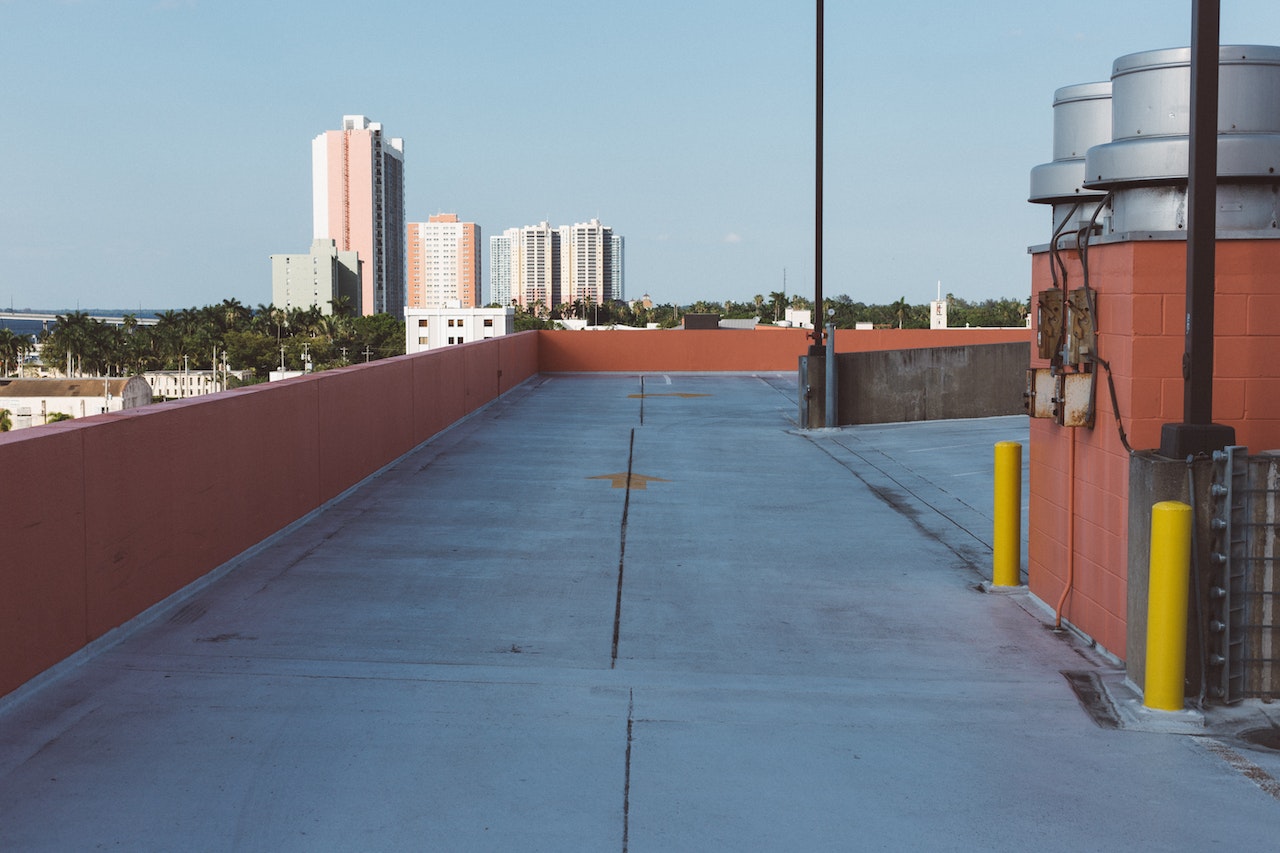In this article, we’ll delve into the world of flat roofing. We will examine various materials utilized, delve into the advantages and disadvantages of this roofing style, and discuss common issues that may arise.
Additionally, as certified roofers, we’ll discuss the installation process and provide some maintenance tips to keep your flat roof in top shape.
So, whether you’re a homeowner or a roofing professional, join us as we uncover the ins and outs of flat roofing. Let’s get started!
Types of Flat Roofing Materials
When it comes to flat roofing, we frequently encounter various materials that can be used. Cost comparison is crucial to consider when choosing a flat roofing material.
Various materials carry distinct price tags, and evaluating the initial cost in comparison to the long-term benefits and durability is essential. The environmental impact of flat roofing materials is another significant factor to consider.
Here is a list of the different kinds of flat roofing materials:
- Built-Up Roofing (BUR): Comprising layers of tar and gravel, BUR is a traditional and durable flat roofing material.
- Modified Bitumen: Asphalt-based with added polymers, providing flexibility and resistance to damage.
- Single-Ply Membrane (TPO, PVC, EPDM): TPO and PVC offer reflective surfaces, while EPDM is known for its durability; all are lightweight and easy to install.
- Metal Roofing: Ideal for flat roofs, metal provides durability, a long lifespan, and resilience against extreme weather conditions.
- Green Roofing: Featuring vegetation, green roofs provide insulation, environmental benefits, and aesthetic appeal.
- Spray Polyurethane Foam (SPF): Applied as a liquid, SPF expands into foam, creating a seamless and energy-efficient roofing system.
- Rubber Roofing: Made from synthetic rubber compounds, it is durable, resistant to damage, and cost-effective.
- PVC Roofing: Durable and resistant to chemicals, PVC roofing is known for its longevity and low maintenance.
Pros and Cons of Flat Roofing
Now, let’s delve into the pros and cons of flat roofing, considering the various types of materials discussed earlier.
Flat roofing offers several advantages over pitched roofing. One significant advantage is cost-effectiveness.
Flat roofs require less material and labor, making them more economical to install and maintain.
They also provide additional usable space, such as rooftop gardens or solar panel installations.
However, flat roofing also has its disadvantages. One significant drawback is poor drainage. Flat roofs have a tendency to retain water, posing the risk of leaks and structural damage if not adequately maintained.
Flat roofs have shorter lifespans than pitched roofs, as they are more prone to wear and tear from weather elements.
When choosing between flat and pitched roofing, it’s crucial to assess the pros and cons according to your particular requirements and budget constraints.
Common Issues With Flat Roofing
Moving on to common issues with flat roofing, we will now discuss some challenges with this type of roofing system. It is essential to be aware of these issues to properly maintain and repair flat roofs.
Here are the fundamental problems commonly faced:
1. Ponding water: One of the most common issues with flat roofing is water accumulation, known as ponding. Failure to address this promptly can result in leaks and structural damage. For leak and moisture protection we recommend using roofing felt for your flat roof’s underlayment.
2. Membrane damage: The membrane on flat roofs can be damaged by weather conditions, foot traffic, and other factors. Frequent inspections and immediate repairs are imperative to avert further damage.
3. Poor insulation: Inadequate insulation is a common issue for flat roofs, contributing to energy loss and elevated heating or cooling expenses. Proper insulation techniques should be employed to mitigate this issue.
4. Cost of maintenance: Flat roofing maintenance can be more expensive than other roofing systems due to the required specialized repair techniques.
Flat Roofing Installation Process
During the installation process of flat roofing, we begin by carefully preparing the surface and applying a waterproof membrane. This is a crucial step to ensure the durability and longevity of the flat roof.
The waterproof membrane acts as a protective layer, preventing water from seeping into the structure.
Once the membrane is in place, we install the insulation layer, which helps regulate temperature and reduce energy costs. The insulation also provides additional structural support.
Next, we lay down the flat roofing material, which can vary depending on the specific needs and preferences of the homeowner. With proper installation and maintenance, flat roofs can benefit homeowners.
Maintenance Tips for Flat Roofing
To ensure the longevity and functionality of our flat roofing, what maintenance tips should we follow?
1. Regular inspections: It is crucial to inspect the flat roof regularly to identify any signs of damage or wear and tear. This allows for timely repairs and prevents further complications.
2. Preventing water damage: Flat roofs are prone to water pooling, leading to leaks and structural damage. Regularly clear debris from the roof and ensure proper drainage to prevent water accumulation.
3. Roof cleaning: Keeping the flat roof clean from dirt, leaves, and debris helps maintain its integrity. Regularly remove any buildup to prevent clogging of drains and potential damage.
4. Professional maintenance: Hiring a professional roofing contractor for regular maintenance and inspections is essential. They have the expertise to identify potential issues and provide necessary repairs or preventive measures.



Comments are closed